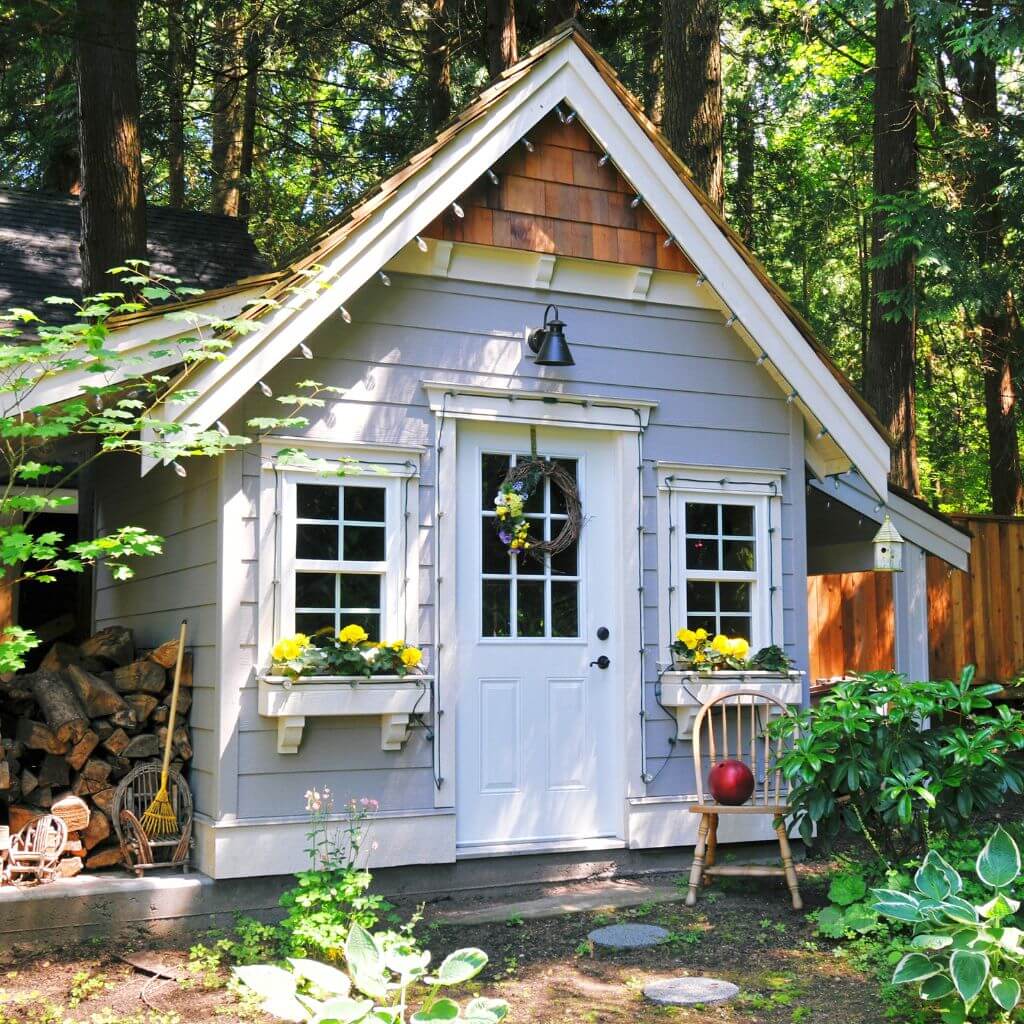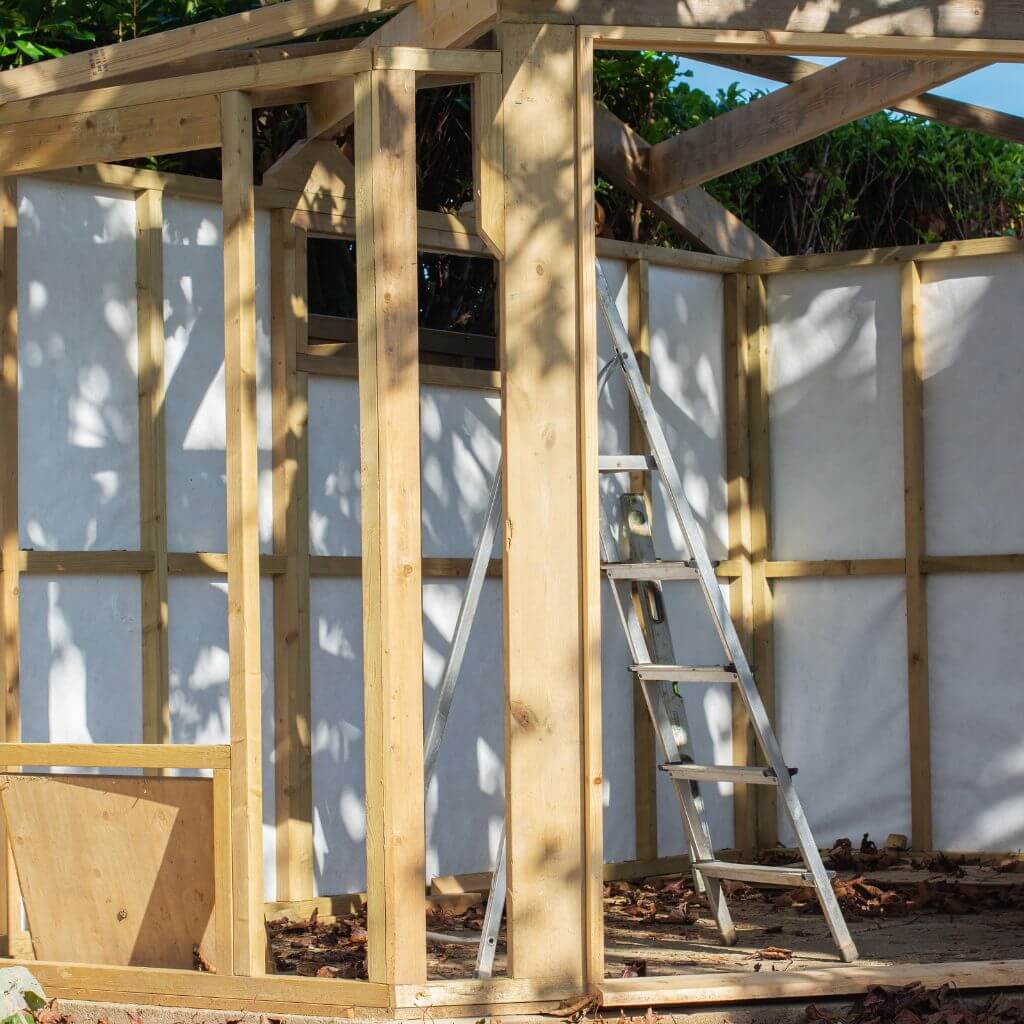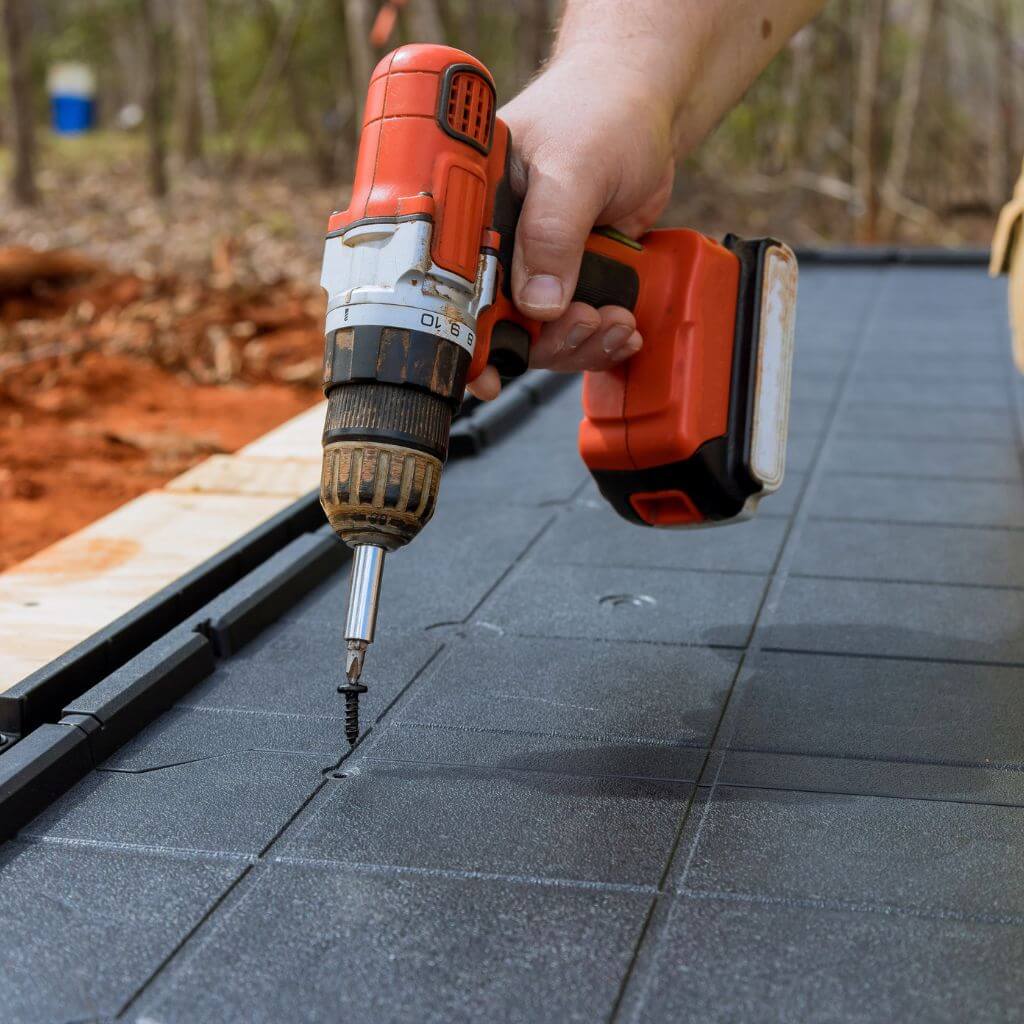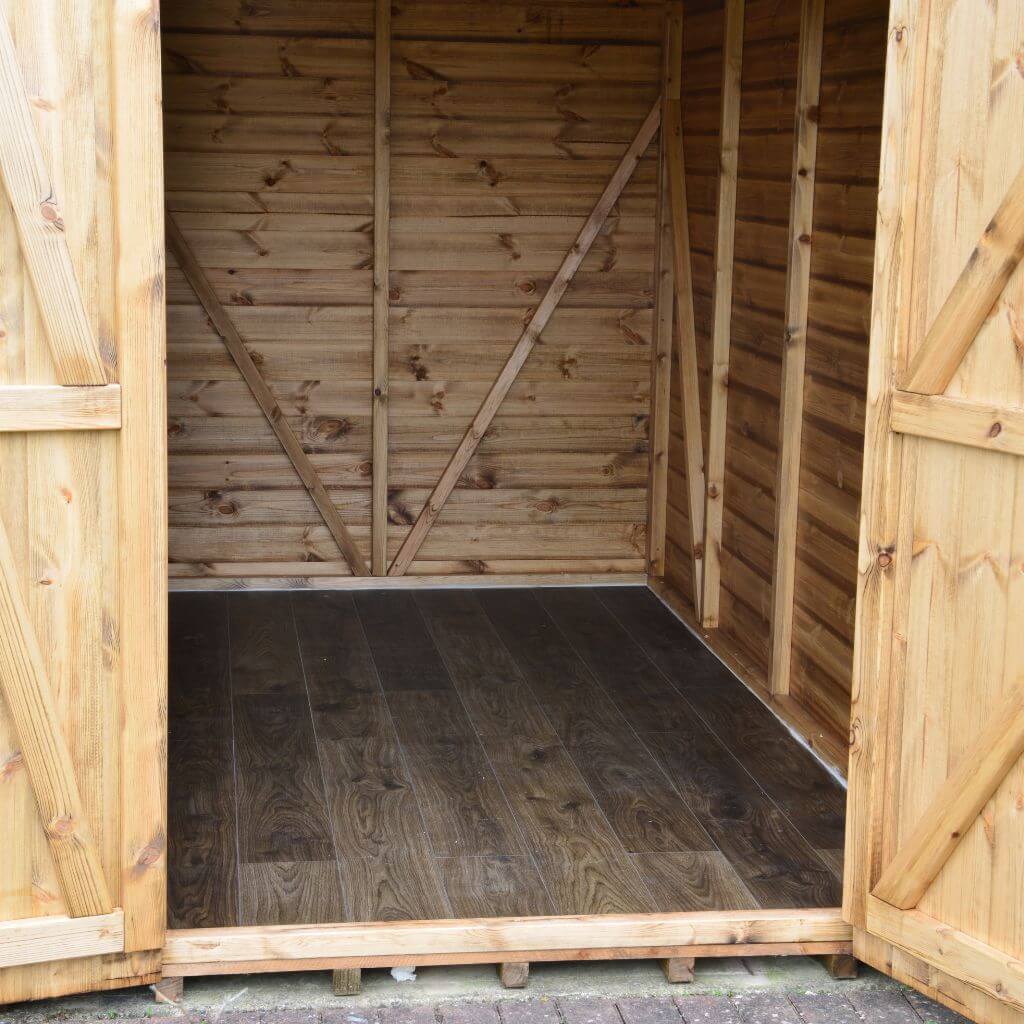
If you’ve been dreaming of adding a garden shed to your backyard oasis, there are a few things you need to know before you start construction. Understanding the ins and outs of garden shed planning permission is crucial to avoiding any legal issues and ensuring your project goes smoothly. From determining the size and location of your shed to getting the necessary permits, this article will provide all the information you need to know to make your garden shed dreams a reality. So, grab a cup of tea, sit back, and let’s get started!

What is Garden Shed Planning Permission?
Garden shed planning permission refers to the legal requirement needed to construct a shed in your garden. Planning permission is a process by which the local authority ensures that any new development, such as a garden shed, is in line with the existing regulations and does not have a negative impact on the surrounding environment or community. It is important to understand the rules and regulations surrounding garden shed planning permission to avoid any potential complications or legal issues in the future.
Definition of Garden Shed Planning Permission
Garden shed planning permission is the official approval from the local authority to construct a shed in your garden. It is a legal requirement in many cases and ensures that your shed complies with the necessary regulations, standards, and guidelines set by the relevant authorities. Without obtaining the proper planning permission, you may be subject to fines, legal action, or even forced removal of the shed.
When is Garden Shed Planning Permission Required?
Garden shed planning permission is generally required when the shed exceeds certain size and height restrictions, or if it is being installed in a designated protected area. However, there are certain circumstances where you may not need planning permission, such as if your shed falls under permitted development rights or is being installed in a conservation area. It is important to determine whether you need planning permission before proceeding with the construction of your shed.
Why is Garden Shed Planning Permission Necessary?
Garden shed planning permission is necessary for several reasons. Firstly, it ensures that the proposed shed is compliant with local regulations and guidelines, ensuring the safety and well-being of yourself and your neighbors. Additionally, obtaining planning permission ensures that your shed does not negatively impact the environment or the aesthetics of the local area. It also provides an opportunity for local authorities and relevant stakeholders to review your plans and provide any necessary advice or recommendations.

Rules and Regulations for Garden Shed Planning Permission
Building Regulations
In addition to obtaining planning permission, garden sheds may also be subject to building regulations. Building regulations cover the structural aspects of the shed, such as its stability, insulation, and fire safety. It is important to ensure that your shed complies with these regulations to guarantee its structural integrity and to maintain the safety of those who will be using or accessing the shed.
Permitted Development Rights
Permitted development rights refer to a set of rules that allow certain types of development, including the construction of garden sheds, without the need for planning permission. These rules vary depending on the size, height, and location of the proposed shed. It is important to familiarize yourself with the permitted development rights in your area to understand whether your shed falls under these exemptions or if you still need to apply for planning permission.
Planning Permission for Listed Buildings
If your property is a listed building, meaning it is of special architectural or historic interest, you will likely need planning permission to construct a garden shed. Listed buildings are subject to stricter regulations and guidelines to preserve their character and historical significance. It is important to consult with your local planning authority and adhere to any additional requirements or restrictions that may be in place for listed buildings.
Conservation Areas
Conservation areas are designated areas that are deemed to have special architectural or historical value. If your property is located within a conservation area, you will need to seek permission for any development, including the construction of a garden shed. The local authority will assess your plans to ensure that the shed is in line with the character and appearance of the area, taking into consideration factors such as materials, design, and scale.
Protected Land
Certain types of protected land, such as green belt land, areas of outstanding natural beauty, national parks, and special landscape areas, are subject to stricter regulations regarding development. If your property is located in any of these designated areas, you may need to obtain special permission or face additional restrictions when building a garden shed. It is essential to consult with the local planning authority to understand the specific regulations and requirements for your location.
Local Authority Restrictions
Apart from the general rules and regulations, local authorities may have their own specific restrictions and guidelines regarding garden shed planning permission. These restrictions can vary from council to council, so it is important to check with your local planning department for any additional requirements or restrictions that may apply to your shed. Ensuring compliance with these local regulations will help you avoid any potential issues or conflicts during or after the construction process.
Determining the Need for Garden Shed Planning Permission
Size and Height Restrictions
One of the key considerations when determining whether you need garden shed planning permission is the size and height of the proposed shed. Different local authorities may have different size and height limits, so it is important to check the specific guidelines for your area. If your shed exceeds these limits, it is likely that you will need to apply for planning permission.
Location and Positioning
The location and positioning of the shed within your garden may also influence whether you need planning permission. Some local authorities may have restrictions on where sheds can be located, especially if they are in close proximity to boundaries, public rights of way, or other structures. It is important to consider these factors and ensure that your shed is placed in a suitable location within your garden.
Distance from Boundaries
Most local authorities have requirements regarding the distance that a shed must be from property boundaries. The purpose of these restrictions is to prevent any encroachment onto neighboring properties and ensure privacy. You will need to check the specific requirements for your area to determine the minimum distance that your shed must be from boundaries. If your shed does not meet these requirements, you will likely need to obtain planning permission.
Materials and Design
The materials and design of your shed may also affect whether planning permission is required. Some local authorities may have restrictions on the types of materials that can be used or specific design guidelines that need to be followed. It is important to consider these factors when planning your shed to ensure that it complies with any material or design restrictions set by your local authority.
Access and Safety Considerations
Access and safety considerations are crucial when determining the need for garden shed planning permission. It is important to ensure that your shed does not obstruct access to your property or create any safety hazards. This includes ensuring that there are proper pathways and clearances around the shed, as well as considering factors such as fire safety and emergency access. These considerations are essential to guarantee the well-being of yourself, your family, and any visitors to your property.

Applying for Garden Shed Planning Permission
Understanding the Application Process
The process of applying for garden shed planning permission can vary depending on your local authority. In general, you will need to submit an application form, along with any required supporting documentation and fees. It is important to fully understand the application process, including any specific requirements or guidelines set by your local authority. This will help ensure that your application is complete and accurate, reducing the risk of unnecessary delays or complications.
Required Documentation
When applying for garden shed planning permission, you will typically be required to submit certain documentation to support your application. This may include detailed plans and drawings of the proposed shed, as well as information regarding its size, height, and materials. You may also need to provide a written description or statement explaining the purpose and design of the shed. It is important to gather all the necessary documentation and ensure that it meets the requirements of your local authority.
Consultations and Public Notices
During the planning permission process, your local authority may consult with various stakeholders, such as neighbors and other relevant parties. This allows them to gather feedback and assess any potential concerns or objections. Additionally, public notices may be displayed to inform the community about your proposed shed and provide an opportunity for them to express their opinions. It is important to be aware of these consultations and public notices and to address any concerns that may arise.
Decision Timeframe
The timeframe for a decision on garden shed planning permission can vary depending on the complexity of the application and the workload of the local authority. In some cases, decisions may be made within a few weeks, while others may take several months. It is important to be patient during this process and to follow up with your local authority if necessary. Engaging in open and transparent communication with the local authority can help expedite the decision-making process.
Appealing a Decision
If your application for garden shed planning permission is denied, you may have the option to appeal the decision. The appeals process also varies depending on the local authority. Typically, you will need to submit an appeal within a specified timeframe along with any supporting evidence or arguments. It is important to carefully review the reasons for the denial and seek professional advice if necessary to determine the likelihood of a successful appeal.
Permitted Development Rights for Garden Sheds
Overview of Permitted Development Rights
Permitted development rights allow certain types of development, including garden sheds, to be constructed without the need for planning permission. These rights vary depending on factors such as the size, height, and location of the shed. Permitted development rights provide more flexibility and convenience for homeowners, allowing them to erect sheds within certain limits without going through the formal planning permission process. It is important to understand the specific rules and limitations of permitted development rights in your area to ensure compliance.
Size and Height Limits
Permitted development rights for garden sheds typically have size and height limits that must be adhered to. These limits can vary depending on the location and regulations of your local authority. For instance, the maximum height of a shed under permitted development rights may be limited to 2.5 meters. It is important to check the specific size and height restrictions for your area to ensure that your shed falls within the permitted limits.
Other Restrictions and Exemptions
While permitted development rights provide more flexibility, they are subject to certain restrictions and exemptions. These can include limitations on the total area of outbuildings within your property, requirements for the shed to be constructed of non-combustible materials, and specific rules regarding the proximity of the shed to the main dwelling. It is important to familiarize yourself with these restrictions and exemptions to ensure that your shed complies with applicable regulations.
Notifying Neighbors
Even if your shed falls under permitted development rights and does not require planning permission, it is still good practice to inform your neighbors about your plans. This allows them the opportunity to discuss any potential concerns or objections they may have. Maintaining good communication with your neighbors can help foster positive relationships and avoid any unnecessary conflicts or disputes in the future.
Special Cases: Listed Buildings and Conservation Areas
Planning Permission for Listed Buildings
If your property is a listed building, additional considerations and restrictions apply when obtaining garden shed planning permission. Listed buildings are protected to preserve their architectural or historical significance. When applying for planning permission for a shed on a listed property, it is important to ensure that the materials, design, and scale of the shed are in line with the character and appearance of the building. In some cases, it may be advisable to consult with a conservation expert or architectural historian to assist with the application process.
Conservation Area Consent
Conservation area consent is similar to planning permission and is required when making alterations or additions to properties within a designated conservation area. This includes the construction of garden sheds. When seeking conservation area consent, it is important to consider the impact of the shed on the character and appearance of the area. This may involve using certain materials, preserving existing features, or adhering to specific design guidelines. Consultation with the local planning authority and relevant conservation organizations is essential when applying for consent in a conservation area.
Additional Considerations and Restrictions
Listed buildings and conservation areas are subject to additional considerations and restrictions beyond normal garden shed planning permission requirements. It is important to be aware of any specific regulations or guidelines that apply and to consult with the relevant authorities and professionals to ensure compliance. Failing to adhere to these additional requirements can result in significant penalties or legal consequences.
Restrictions on Protected Land
Green Belt Land
Green belt land refers to protected areas of land surrounding towns and cities designed to prevent urban sprawl and preserve the natural environment. If your property is located in a green belt area, obtaining garden shed planning permission can be more challenging. Green belt regulations can highly restrict development, including the construction of new outbuildings such as sheds. It is important to consult with the local planning authority to determine the specific restrictions and requirements in your green belt area.
Areas of Outstanding Natural Beauty
Areas of outstanding natural beauty (AONB) are designated areas recognized for their exceptional landscape and scenic beauty. AONBs are subject to stricter regulations to ensure that development is carefully managed, including the construction of garden sheds. If your property is located within an AONB, you may face additional restrictions and requirements when seeking planning permission for a shed. It is important to consult with the local planning authority and relevant conservation organizations to understand the specific regulations and guidelines applicable to your AONB.
National Parks and Conservation Areas
National parks are protected areas of special environmental or cultural importance. These areas are subject to stringent regulations to preserve their natural beauty and unique qualities. Conservation areas, on the other hand, are designated areas recognized for their architectural or historical significance. If your property is located within a national park or conservation area, obtaining garden shed planning permission can be complex and challenging. Special considerations are given to ensure that any development, including sheds, does not negatively impact the natural or historic value of these areas.
Special Landscape Areas
Special landscape areas are designated areas recognized for their unique and significant landscape qualities. These areas are protected to ensure that any development does not compromise the beauty or character of the landscape. If your property is located within a special landscape area, you may need to meet additional requirements and restrictions when applying for planning permission for a garden shed. It is essential to consult with the local planning authority and relevant organizations to determine the specific regulations and guidelines that apply to your special landscape area.
Getting Expert Advice and Help
Consulting a Planning Consultant
Navigating the garden shed planning permission process can be complex and overwhelming, especially if you are unfamiliar with the regulations and requirements. Consulting a planning consultant can greatly assist you in understanding the specific rules for your area and ensuring that your shed complies with all necessary regulations. These professionals can provide expert advice, assist in preparing and submitting your application, and guide you through the entire process.
Seeking Assistance from Local Authorities
Your local planning authority is a valuable resource when it comes to garden shed planning permission. They can provide you with information, guidelines, and specific regulations for your area. It is recommended to reach out to them early in the planning process to seek advice, clarify any doubts, and ensure that you are following the correct procedures. The local planning authority can also help you understand any local restrictions or considerations that may apply to your shed.
Professional Architectural Services
Engaging the services of a professional architect can be beneficial, especially for larger or more complex garden shed projects. Architects have the expertise and knowledge to design sheds that meet all the necessary planning and building regulations. They can provide detailed plans, drawings, and specifications in support of your planning permission application. Additionally, architects can assist in addressing any unique challenges or considerations that may arise during the design and construction process.
Common Misconceptions and FAQs
Do I Need Planning Permission for a Small Shed?
The need for planning permission for a small shed depends on a variety of factors, such as its size, height, location, and the specific regulations of your local authority. If your shed falls within the limits of permitted development rights, you may not need planning permission. However, it is important to check with your local planning authority to determine the requirements and restrictions that apply to your shed, regardless of its size.
Can I Use my Shed for a Home Business?
The use of a shed for a home business may require additional planning permission and compliance with relevant regulations. Depending on the nature and scale of your business, there may be specific requirements regarding access, parking, utilities, and the impact on the surrounding area. It is crucial to consult with your local planning authority and adhere to any necessary regulations before using your shed for a home business.
Can I Convert my Shed into a Living Space?
Converting a shed into a living space, such as a garden office or a granny annex, may require planning permission and compliance with building regulations. The change in use, as well as the necessary modifications to the shed, may trigger additional requirements and restrictions. It is important to consult with your local planning authority and obtain the proper approvals before converting your shed into a living space to ensure compliance with all applicable regulations.
Can I Install Electricity and Plumbing in my Shed?
The installation of electricity and plumbing in a shed may require additional permissions and compliance with specific regulations. Electrical and plumbing work must meet safety standards and be carried out by qualified professionals. You may need to obtain separate approvals or permits for these installations, which may include inspections by relevant authorities. It is important to consult with your local planning authority and adhere to any necessary regulations when considering installing electricity and plumbing in your shed.
Conclusion
Understanding garden shed planning permission is essential for anyone considering the construction of a shed in their garden. By adhering to the rules and regulations set by the local authority, you can ensure the legality, safety, and environmental impact of your shed. From determining the need for planning permission to applying for permits and considering specific restrictions, it is important to be well-informed and seek professional assistance when necessary. By following the proper procedures, you can enjoy the benefits of a well-designed and compliant garden shed that enhances your outdoor space without any legal complications.
Read How to Determine the Maximum Size of an Outbuilding without Planning Permission
